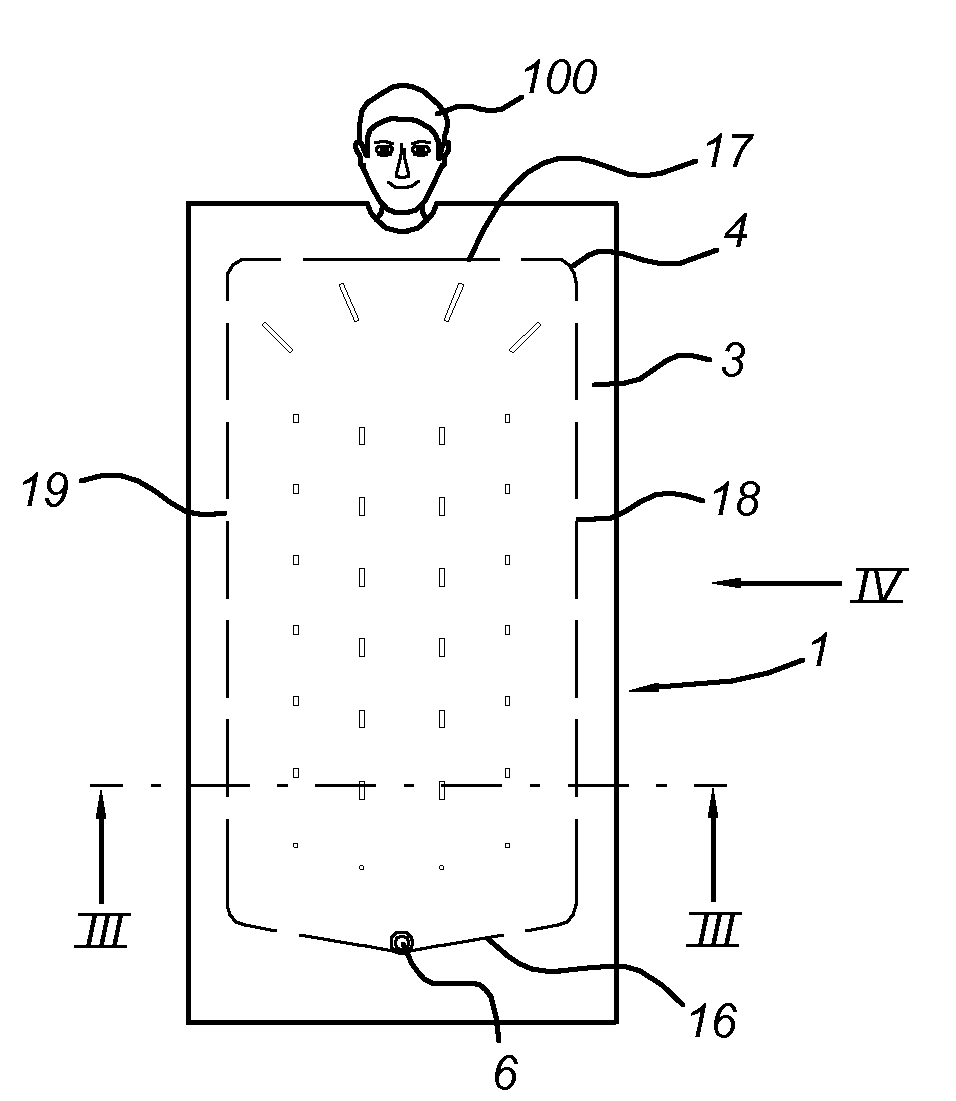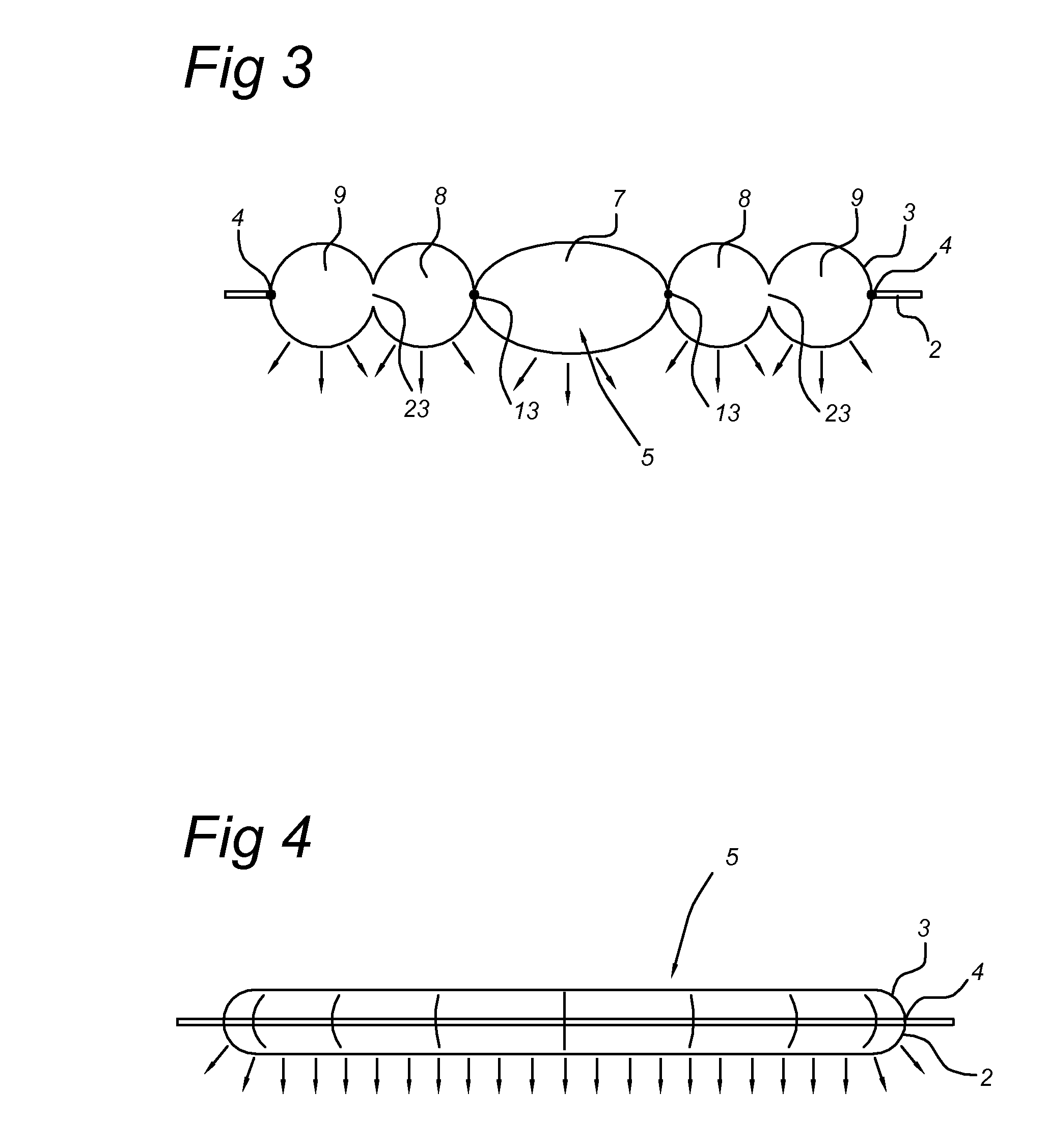Device for conveying air to a person
a technology for conveying devices and air, applied in the field of conveying devices, can solve the problems of unsuitable convex bodies for conveying heated air, and achieve the effect of improving the quick and even distribution of supplied air and low permeability values
- Summary
- Abstract
- Description
- Claims
- Application Information
AI Technical Summary
Benefits of technology
Problems solved by technology
Method used
Image
Examples
third embodiment
[0099]FIG. 7 shows the third embodiment, model ‘paediatric’, which is generally denoted by reference numeral 101. It is composed of an inner sheet which is permeable to air and an outer sheet which is impermeable to air is, both sheets being connected to one another by a peripheral weld 104 in order to define an air chamber between them, and a connection 106 is provided in the outer sheet for blowing in air. It has two main ducts 107, which are separated from one another by two welded strips 136 and a spot weld 137. The connection 106 is in line with the welded strips 136 at some distance in front of the inlets 110 of both main ducts 107. The main ducts 107 each have, in the non-inflated state, a width A. The longitudinal sides of the main ducts 107 which are turned away from one another are each delimited by a first series of first welded strips 113, which each have a length B, with first intermediate spaces 114 having a length C between them. At a distance D downstream from the ou...
fourth embodiment
[0100]FIG. 8 shows the fourth embodiment, model ‘half upper’, which is denoted overall by reference numeral 151. It is composed of an inner sheet which is permeable to air and an outer sheet which is impermeable to air, both sheets being connected to one another by a peripheral weld 154 in order to define an air chamber between them, and two connections 156 are provided in the outer sheet for blowing in air. It has two main ducts 157, which run at an angle with respect to one another. Depending on the available space around the patient, the one or the other connection 156 will be used for blowing in air and the connection which is not used will be closed, as has been described for the embodiment from FIGS. 5-6. In that case, the main duct 157 which is in use and connected to the connection 156, will then serve as main duct.
[0101]In the embodiment according to FIG. 8, each main duct is delimited by two first welded strips 163, which are provided a distance C apart so as to leave an i...
PUM
 Login to View More
Login to View More Abstract
Description
Claims
Application Information
 Login to View More
Login to View More - R&D
- Intellectual Property
- Life Sciences
- Materials
- Tech Scout
- Unparalleled Data Quality
- Higher Quality Content
- 60% Fewer Hallucinations
Browse by: Latest US Patents, China's latest patents, Technical Efficacy Thesaurus, Application Domain, Technology Topic, Popular Technical Reports.
© 2025 PatSnap. All rights reserved.Legal|Privacy policy|Modern Slavery Act Transparency Statement|Sitemap|About US| Contact US: help@patsnap.com



